Six months and 150,000 deaths: the defining Covid-19 moments in the US – timeline
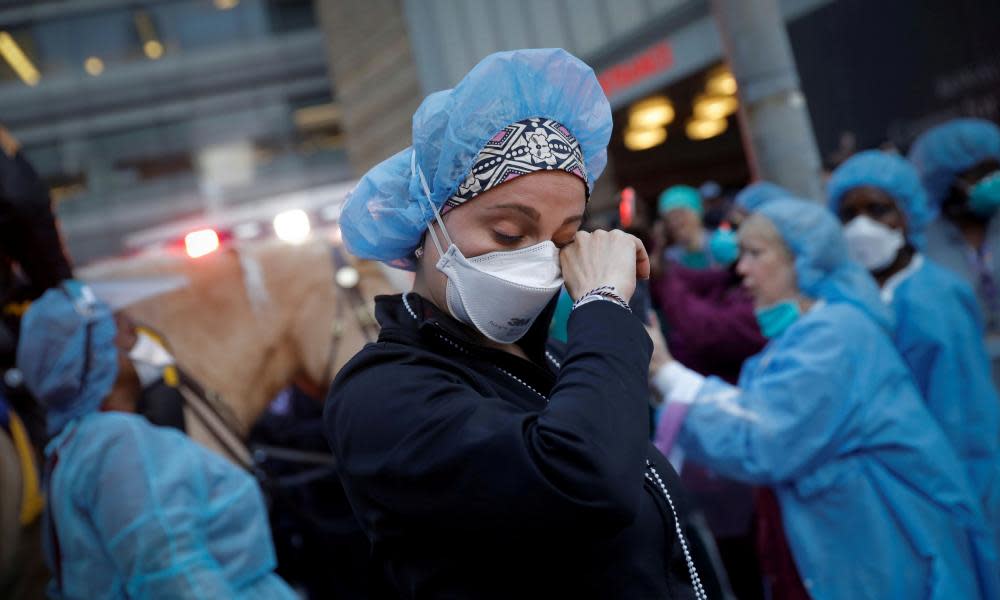
Since the start of the year, Covid-19 has upended life in the US, ravaging cities and businesses and overwhelming woefully unprepared hospitals. What started as a single infection in Washington state ballooned until the US became the global hotspot for Covid-19, with exponentially more confirmed cases than any other nation.
Mixed messages from Donald Trump and his administration have caused confusion . Squabbles between the president, governors and mayors have inspired headlines as critics assail missed chances to contain the virus.
Related: 'It will disappear': the disinformation Trump spread about the coronavirus – timeline
Now, the US has passed another bleak milestone, 150,000 Covid-related deaths, while there are more than 4.2 million confirmed cases, according to Johns Hopkins University.
These are the defining moments from the US under Covid-19 so far.
21 January
The US confirms its first case of Covid-19, after a 35-year-old man who lives north of Seattle returns from Wuhan, China. A day later, Trump tells CNBC: “It’s one person coming in from China, and we have it under control.”
29 January
The White House announces a taskforce to “monitor, contain and mitigate the spread of the virus”.
30 January
The World Health Organization (WHO) labels the outbreak a public health emergency of international concern. But Trump continues to downplay it, telling a crowd in Iowa: “We only have five people. Hopefully, everything’s going to be great.”
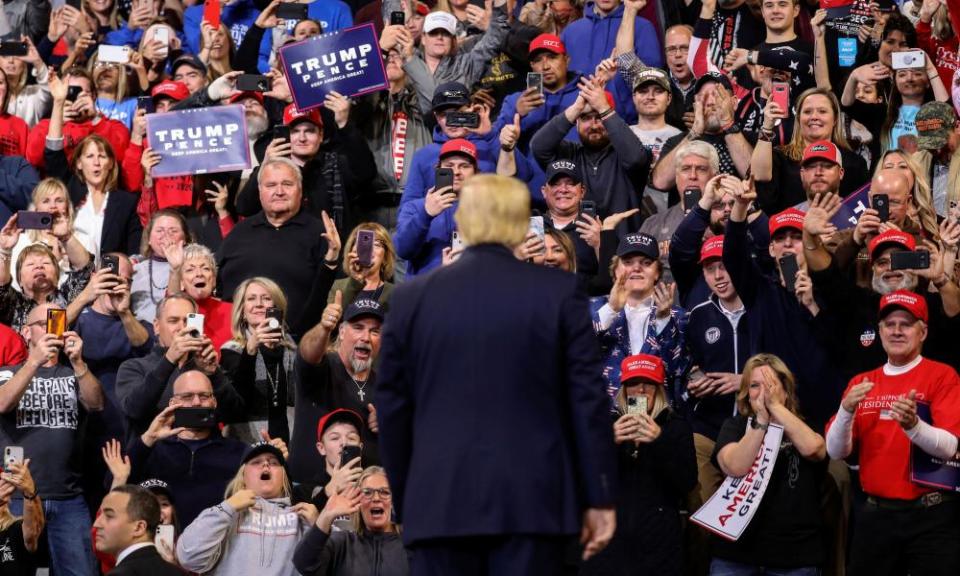
31 January
Alex Azar, secretary of health and human services, declares a public health emergency. Trump restricts travel from China, a decision that he later claims, erroneously, saved hundreds of thousands of lives.
5 February
After becoming the third president to be impeached, Trump is acquitted by the Republican-controlled Senate.
6 February
The federal Centers for Disease Control and Prevention (CDC) ships coronavirus testing kits to labs, but early tests are contaminated, handicapping the response. The US experiences its first known death from Covid-19, in California, though it will not be identified and reported as such for months.
24 February
The economy shows signs of freefall, even as Trump tweets: “Stock Market starting to look very good to me!” His administration asks Congress for $2.5bn to pay for vaccine development and protective equipment.
26 February
The CDC announces that a patient in California has tested positive for Covid-19, potentially the first US case where the source of infection is unknown. At Life Care Center, a nursing home outside Seattle, two residents contract the virus. Dozens will succumb. Trump taps Mike Pence to lead the coronavirus response.
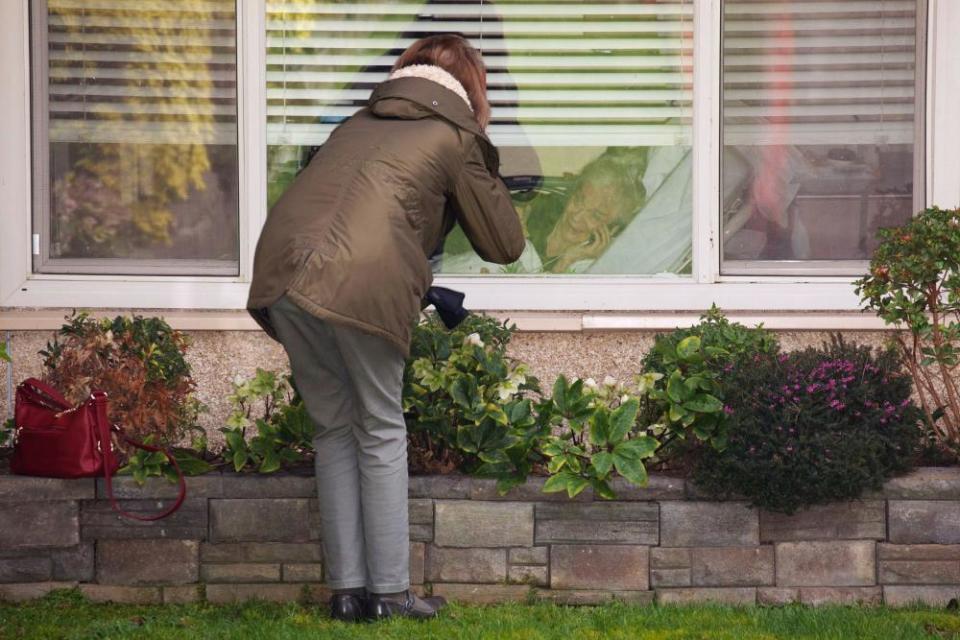
29 February
The US makes public what is then believed to be its first Covid-related death, a man in his 50s. The case is in Washington state, ground zero for the virus. Trump restricts travel from Iran.
6 March
Trump signs an $8.3bn aid bill that receives near-unanimous support in Congress. He says: “Anybody that wants a test can get a test,” an unfounded claim that confuses Americans and hamstrings healthcare workers.
11 March
The WHO redefines the outbreak as a pandemic. Trump restricts travel from Europe, excluding the UK. Days later, he announces a bar on travel from the UK and Ireland.
12 March
Broadway closes and the NCAA cancels March Madness. The US has more than 1,600 confirmed coronavirus cases, across almost every state.
13 March
Trump declares a national emergency, the same day Washington state orders its schools closed.
18 March
Trump signs a second coronavirus relief bill.
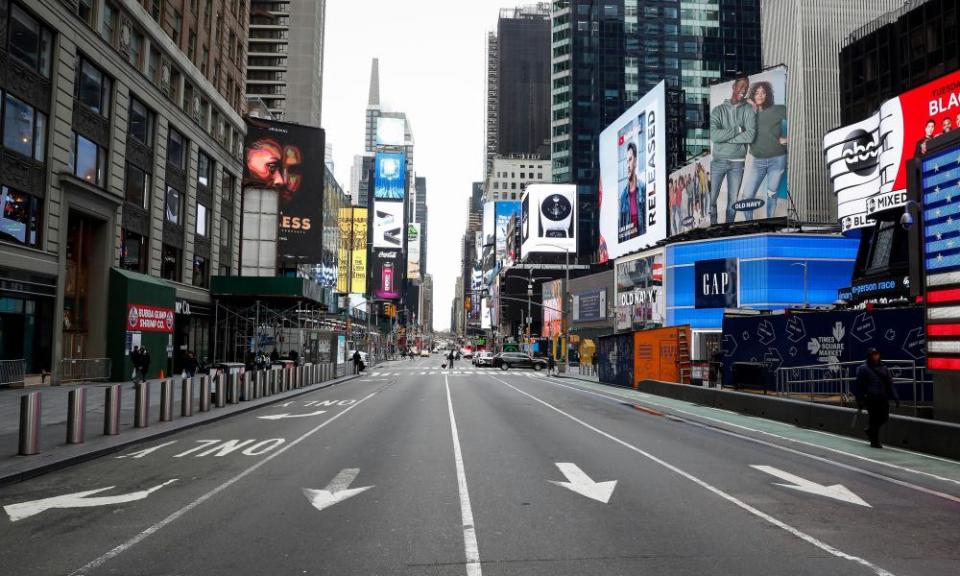
19 March
Californians must stay at home to curtail the spread of the virus. A day later, New York issues a similar order, beginning a war of words between Trump and a number of governors.
24 March
Trump tells Fox News he “would love to have the country opened up and just raring to go by Easter”, 12 April. He faces immediate criticism.
26 March
The US reports its first 1,000 deaths. The next day, Trump signs a $2.2tn stimulus package that includes a $1,200 check for many Americans. Trump later takes heat for making sure the checks, intended to help struggling workers during catastrophic levels of unemployment, bear his signature during an election year.
28 March
The US death toll doubles, to more than 2,000, in just two days.
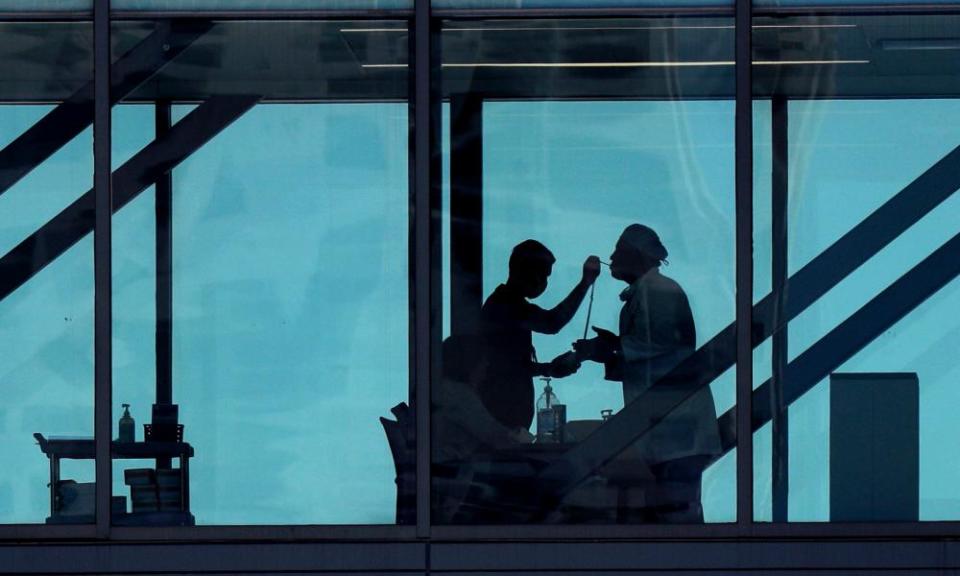
31 March
In a significant shift in tone, exactly a week after he floated the idea of reopening the country by Easter, Trump says “our country is in the midst of a great national trial, unlike any we have ever faced before”.
3 April
The CDC recommends all Americans wear face coverings in public – after weeks of suggesting otherwise. New York’s mayor warns that D-day is looming as hospitals struggle to find personal protective equipment, ventilators, beds and staff.
13 April
Trump claims total authority over the states, saying: “The president of the United States calls the shots.” He is challenged by governors, who say he does not have the constitutional right to reopen the country without their involvement.
17 April
Two days after thousands of protesters in Michigan gathered to decry their state’s stay-at-home order, Trump tweets to “LIBERATE MINNESOTA”, “LIBERATE MICHIGAN” and “LIBERATE VIRGINIA”. Protesters in other states follow suit.
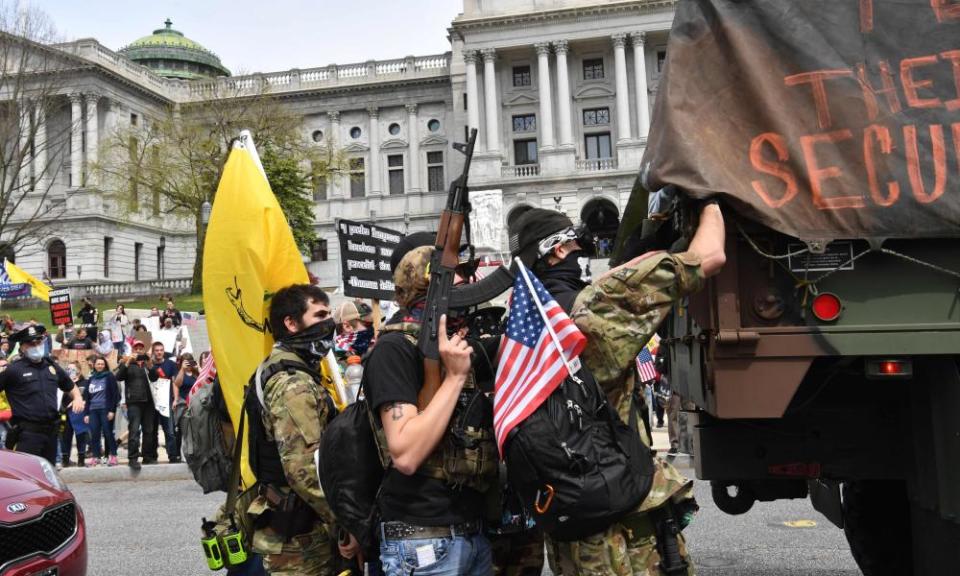
23 April
The House of Representatives approves another relief bill to help small businesses and hospitals, after previous funds for small businesses fell into the hands of large companies such as Shake Shack and Potbelly. At a press briefing, Trump seems to suggest people might inject disinfectant as a way to fight the virus.
24 April
Trump claims he was being sarcastic about the disinfectant. The US surpasses 50,000 Covid-related deaths.
27 April
Trump says his administration is conducting “serious investigations” into China’s handling of the disease outbreak, and would most likely seek “very substantial” damages from Beijing over the pandemic.
28 April
The number of Americans who have tested positive for coronavirus is now more than 1 million, while almost 60,000 people are confirmed to have died with the disease in the US.
At least 68 people have died at a veterans’ home in Massachusetts after contracting Covid-19, with dozens more infected.
30 April
Amazon announces revenues of $74.5bn in the first quarter of 2020, 26% higher than the same period last year and equivalent to more than $33m an hour.
3 May
Trump tells Fox News on Sunday that he’s “very confident” of a vaccine being developed by the end of 2020.
5 May
The White House coronavirus taskforce could be wound down as soon as June with responsibility handed back to federal agencies, the taskforce chief, Mike Pence, says. The US death toll tops 70,000.
6 May
Trump says a growing coronavirus death toll is simply the price that must be paid for reopening the economy. “We have to be warriors,” he tells Fox News. “We can’t keep our country closed down for years.” He reverses his plan to disband the White House coronavirus taskforce.
7 May
The Trump administration shelved a document created by the nation’s top disease investigators, it emerges, with step-by-step advice to local authorities on how and when to reopen restaurants and other public places during the still-raging coronavirus pandemic.
9 May
Three members of the White House coronavirus taskforce – including Dr Anthony Fauci – place themselves in self-quarantine after contact with someone who tested positive for Covid-19.
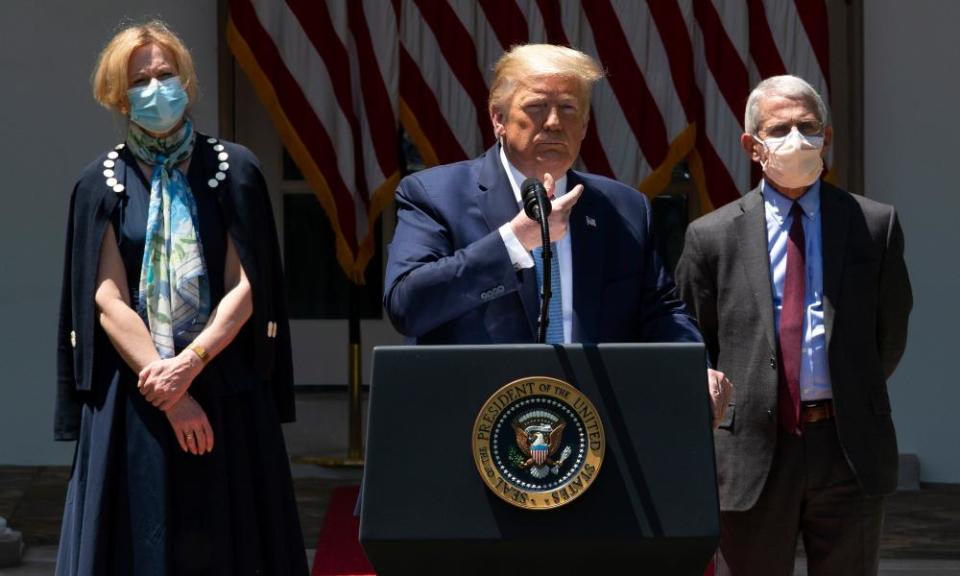
13 May
Despite Trump’s claims that the spread of coronavirus is dropping around the US, new infection hotspots are cropping up across Republican heartlands, including in Texas and Alabama.
18 May
The president says he is taking the antimalarial drug hydroxychloroquine as a defense against Covid-19, despite FDA warnings about its risks. Trump also threatened to cut US funding to the WHO permanently.
21 May
Trump defies requests by going without a face mask in public during his tour of a Ford factory in Michigan, though pictures emerged of him wearing one earlier. Obama administration scientists warn the US must rebuild its emergency medical stockpile before fall.
22 May
Churches, mosques and synagogues are “essential services”, Trump declares, and threatens to override governors who refuse to reopen them at the weekend – a power he does not possess.
27 May
The United States records more than 100,000 deaths from Covid-19, moving past the milestone even as many states relax mitigation measures to stop the spread of the coronavirus.
Protests begin in cities across the country in the wake of the killing of George Floyd, a black man, in Minneapolis, Minnesota, by a white police officer on 25 May. In the coming weeks, hundreds of thousands of people will protest on the streets for racial justice. Though experts said the huge turnout at protests could lead to an increase in Covid-19 infections, an uptick in cases due to the protests was not seen.
28 May
Unemployment claims in the US filed during the pandemic surpass 40 million.
1 June
Fauci says that he has not been in contact with Trump for two weeks, sparking fears that he has been frozen out of the White House’s Covid-19 response.
8 June
After months of mandated shutdowns as the virus raged through the city, New York City begins its first phase of reopening businesses, allowing most retail stores to open for delivery and pick-up. In April, the city was seeing as many as 500 Covid-19-related deaths a day. By early June, the number was in the single digits. “This is a triumph for all New Yorkers that we’ve gotten to this point,” said Mayor Bill de Blasio.
10 June
The US hits another dark milestone: 2 million confirmed cases of Covid-19.
20 June
Trump holds a campaign rally in Tulsa, Oklahoma, with underwhelming attendance. Despite boldly defying public health experts who criticized the campaign for planning a large gathering during the pandemic, thousands of seats in the arena remained empty.

24 June
The US records 34,700 Covid-19 cases in a single day, the highest increase in new cases since April, wiping out two months of progress and marking a turning point in new surges of cases as southern and western states begin to see huge increases.
25 June
The CDC reveals that as many as 20 million Americans could have contracted Covid-19 – 10 times more than official counts. Officials at the agency note that many who have contracted the virus, especially young people, have not exhibited symptoms and do not know that they had the virus.
6 July
After announcing his intention to pull out of WHO in May, Trump officially withdraws the US as a member of the organization. Without evidence, Trump accused WHO of withholding information and being too close to China.
12 July
Florida breaks the national record for largest daily increase of new Covid-19 cases with 15,299 new infections. Just the day before, Disney had reopened its huge park in Florida to visitors.
13 July
California’s governor, Gavin Newsom, reverses reopening measures, ordering bars to close completely and restaurants, museums and movie theaters to halt indoor operations once again after the state started reporting record-high numbers of cases.
16 July
Georgia’s governor, Brian Kemp, sues Atlanta’s mayor, Keisha Lance Bottoms, for enforcing a mask mandate in her city. Under an executive order from Kemp, local officials are not allowed to enforce mandates stricter than the state’s.
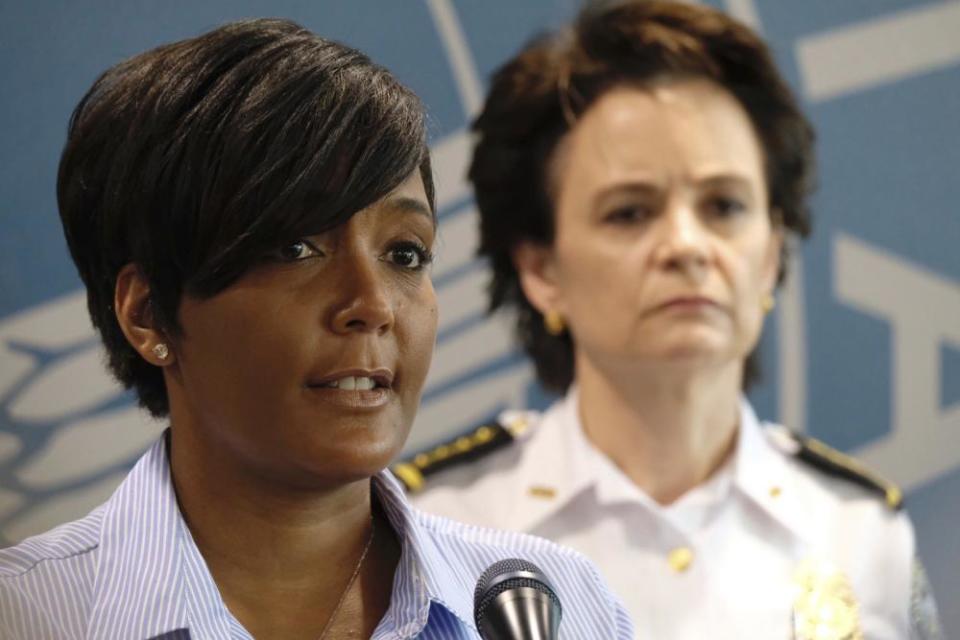
21 July
Trump, for the first time, endorses face masks, telling reporters that they are “patriotic”. The CDC has been telling the American public that face masks are crucial to prevent the spread of the virus, yet early on in the pandemic, Trump rebuked masks, suggesting that wearing one is a political statement against him and mocking people for wearing them in public.
22 July
The US daily death toll surpasses 1,000 for the first time since the start of June as cases surge dramatically in southern states.
23 July
The US surpasses 4m confirmed cases of Covid-19. More than 915,000 cases were confirmed in the span of two weeks.
29 July
The US reaches 150,000 deaths due to Covid-19 – the most deaths of any country.
This article was updated on 29 July 2020

 Yahoo News
Yahoo News 
